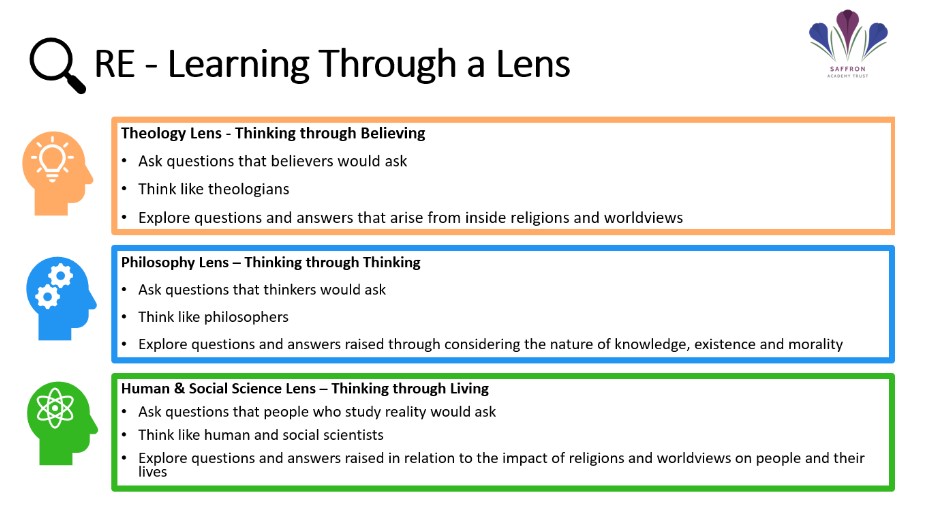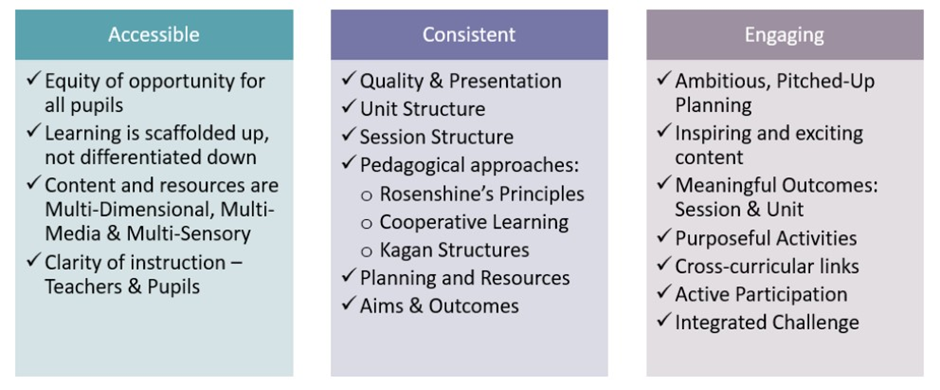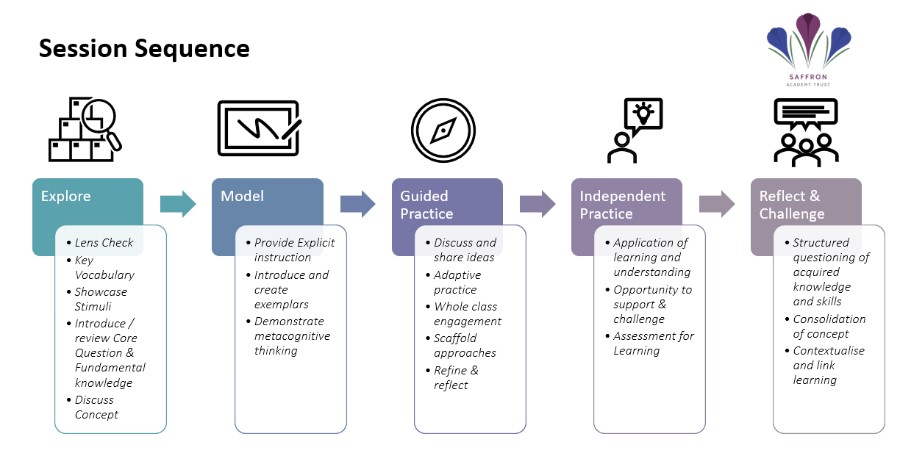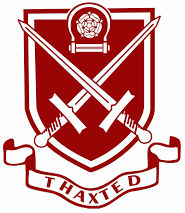RE
RE
Intent
Our school values – The 6 Rs (resilience, reflection, resourcefulness, respect, reasoning and responbility) underpin everything we do at Thaxted Primary School. The knowledge and understanding gained in Religious Education lessons ensures that our children are sent out into the wider world with respect for others and an understanding of the similarities and differences between belief groups.
At Thaxted Primary School, RE is a valuable part of the curriculum offering opportunities for personal reflection and spiritual development, deepening the understanding of the significance of religion in the lives of others – individually, communally and cross culturally. It provides a key context to develop young people’s understanding and appreciation of diversity, to promote shared values and to challenge discrimination.
Implementation
Following the announcement from Essex LA for all to schools to implement the new Essex SACRE Agreed Syllabus by September 2023, the Saffron Academy Trust has written a comprehensive and complete scheme of work.
At Thaxted Primary School, we follow the Saffron Academy Trust RE Scheme:
- Mirrors the Essex SACRE Agreed Syllabus 2022
- Designed and developed by teachers for pupils
- Incorporates evidenced-based cognitive approaches to teaching and learning
- Ensures high-quality, purposeful outcomes for each enquiry
- Endorsed by Essex LA and Essex SACRE
We teach RE through 3 distinct lenses. In line with the Essex SACRE 2022 Syllabus, the SAT RE Scheme explores Religious Education through three distinct lenses.

The hallmarks of the scheme are that it is Accessible, Consistent and Engaging for all.

The 5 step pedagogy allows for often complex concepts and applied activities to be broken down into small steps, allowing all pupils to engage and succeed.

Impact
Promoting Cultural Competence and Respect
Our RE provision has a significant impact on our pupils' cultural competence and respect for others. By providing a broad and balanced curriculum, they develop an understanding and appreciation of diverse religious traditions and the common values they share. Pupils demonstrate respect and empathy towards those with different beliefs, fostering a harmonious and inclusive school community.
Developing Critical Thinking Skills
Through our RE curriculum, pupils develop critical thinking skills and an ability to evaluate different religious perspectives. They learn to approach religious ideas with open-mindedness, examining evidence and reasoning to form well-reasoned judgments. This empowers them to make informed decisions and prepares them to navigate the complex religious landscape with confidence.
Nurturing Spiritual and Moral Development
Our RE provision nurtures the spiritual and moral development of our pupils. Through engaging lessons and opportunities for reflection, pupils explore their own beliefs and values, make connections between their learning and their own lives, and develop a sense of moral purpose. This ultimately contributes to their personal growth, well-being, and readiness to become responsible citizens.
In conclusion, our intent, implementation, and impact statement demonstrate our commitment to delivering high-quality RE education that embraces inclusivity, fosters critical thinking, and nurtures spiritual and moral development. Our pupils develop a deep understanding and respect for different beliefs and religions, enabling them to thrive as individuals and contribute positively to society.
